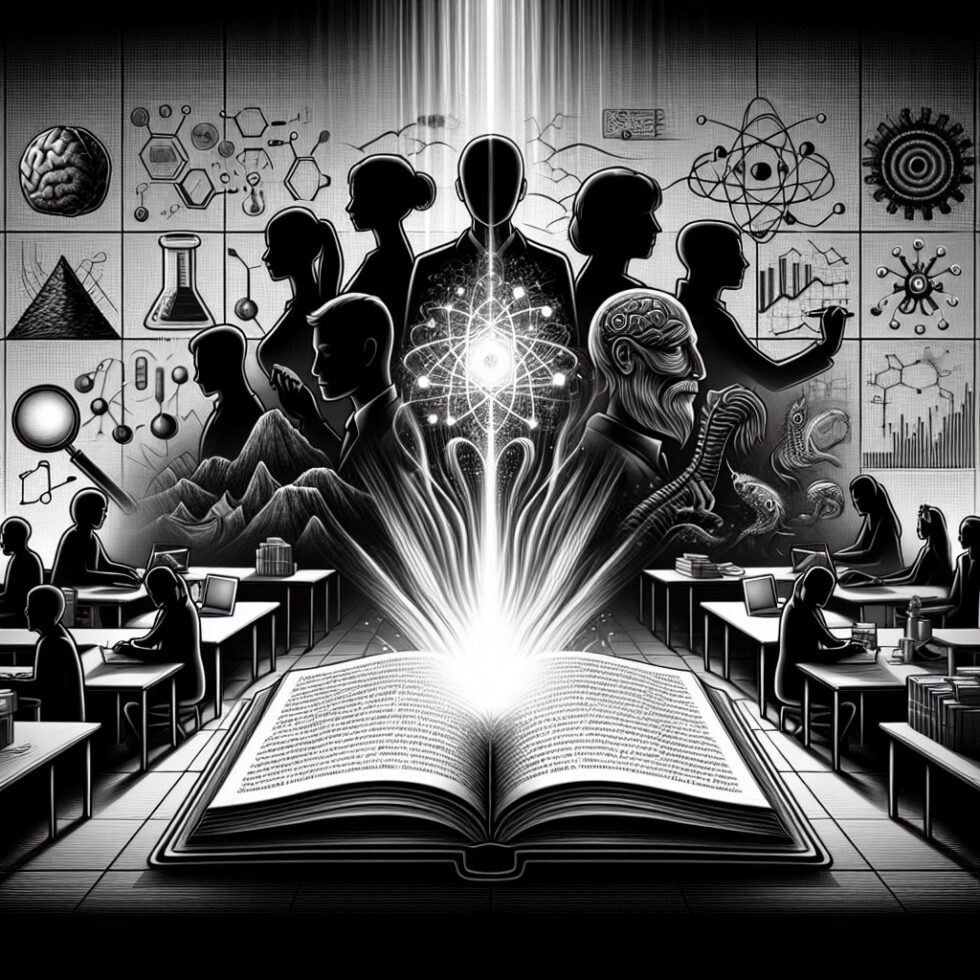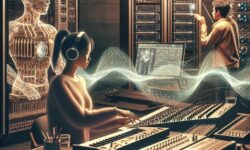
Scientists keep lab notebooks for a reason. They record steps, decisions, and surprises. Now imagine that notebook could learn from every entry, suggest better next steps, and point out where the data might be fooling you. That is what practical artificial intelligence is doing across research fields today. Not as a magic solver, but as an extra pair of careful, fast eyes.
This article tours how AI is used in several scientific disciplines—seismology, neuroscience, ecology, archaeology, oceanography, and chemistry—and highlights the working patterns that make it useful without diluting scientific standards. The goal is simple: clearer methods, faster iteration, and more reliable findings. We’ll keep the language plain, the examples concrete, and the advice actionable.
Seismology: Hearing More in the Noise
Earth tremors generate complex waves that rattle across thousands of sensors. Many events are tiny, short, and buried in background noise. Classic signal processing can miss them. AI steps in as a sensitive filter that learns the shapes of true signals and the contexts where false alarms happen.
Microearthquakes and aftershocks
Researchers train convolutional and recurrent models on labeled waveform snippets to detect P- and S-waves. When tuned with data from a region’s stations, these models can find order-of-magnitude more small events than traditional detectors. That higher event count matters: it sharpens maps of fault structures and stress transfer after a mainshock.
Adapting to new terrain
A model that excels in Japan may falter in Alaska. Sensors, rock types, and noise sources differ. Teams handle this with transfer learning: freeze early layers that learn general wave patterns and fine-tune later layers with regional data. They also track drift—seasonal changes in noise, instrument upgrades, or construction near stations—and schedule periodic recalibration.
Uncertainty that decision-makers can use
Event detectors are not all-or-nothing. A calibrated probability score allows seismologists to set thresholds by mission need: lower for catalog building, higher for public alerts. Techniques like deep ensembles and temperature scaling provide better probability estimates, which feed more rational alerting policies and false-alarm audits.
Neuroscience: Sorting Spikes, Untangling Signals
Neurons talk in spikes. Electrodes capture mixtures from many cells, often with movement, noise, and overlapping signals. Sorting these spikes into units used to be slow and subjective. Now, AI-based spike sorting learns waveform signatures and separation strategies, accelerating analysis while keeping human oversight in the loop.
From raw voltage to sorted units
Modern pipelines combine denoising, event detection, and clustering. Deep models trained on realistic simulations (or hand-labeled segments) learn robust features over classical amplitude and width. The practical win is twofold: speed—hours become minutes for long recordings; and consistency—fewer lab-to-lab variations in results.
Calcium imaging and deconvolution
Optical methods trace calcium as a proxy for firing. AI-based deconvolution models translate the slow, smoothed fluorescence back into likely spike trains. This matters when studying fast behaviors or coordinating activity across large neuron populations. Physics- and physiology-informed losses help prevent impossible spurts of activity.
Ethics and data governance
Human-related studies (clinical EEG, intracranial recordings) require meticulous privacy and bias reviews. Teams document model behavior by demographic and clinical subgroups, use consent-aware data pipelines, and report model cards that list evaluation contexts. The result is not perfection, but a documented, testable model lifecycle.
Ecology: Watching Movement Without Interrupting It
Ecologists now attach small GPS and inertial sensors to birds, fish, and mammals. The data trace daily routines and rare events. AI helps classify behaviors (foraging, gliding, hunting), flag anomalies (injury, device malfunction), and predict where and when animals will appear—without intruding on their lives.
Behavior classification with scarce labels
Field labels are expensive. Models lean on semi-supervised learning: a handful of annotated segments teach a model to separate patterns across large unlabeled datasets. Data augmentation simulates sensor quirks (missing samples, jitter), building robustness. When the classifier says “foraging” with 60% confidence, ecologists can schedule human checks rather than blind trust.
Energy-aware algorithms on-device
Devices run on tiny batteries. Teams deploy lightweight inference on collars or tags to decide when to record at higher resolution, saving power for the most informative moments. Distillation and quantization shrink models enough for microcontrollers, while preserving the core behavior cues.
Population-level insight without overreach
Model outputs aggregate into maps and timelines. But a single faulty sensor can skew results. Labs set up “sanity dashboards”: distributions by device, species, region, and season. They also test against naive baselines (“move at random within home range”) to prove the model adds real signal, not just fancy curves.
Archaeology and Cultural Heritage: Reading What Time Tried to Erase
Shards, scrolls, inscriptions, and layers of paint all carry faint traces of history. AI supports archaeologists by enhancing legibility, classifying artifact fragments, and suggesting candidate matches—all while keeping human expertise at the center.
Multispectral reading and text recovery
Ancient inks reflect light differently than substrate. Models trained on multispectral images learn to separate these signals and enhance text, revealing letters under soot or in rolled scrolls. Domain-informed constraints prevent over-sharpening that invents glyphs. The AI proposes; experts confirm with linguistic and contextual knowledge.
Fragment classification and reassembly
Pottery sherds can be clustered by temper, firing technique, or decoration style. Feature extractors measure texture and curvature; graph models score how well edges match. Suggestions accelerate the slow work of puzzle-assembly while preserving provenance rules and chain-of-custody records.
Cultural sensitivity by design
Models are trained to avoid revealing sensitive site locations or unvetted interpretations. Teams predefine redaction logic, use access controls, and maintain an audit trail of how the AI shaped hypotheses. The goal is assistive analysis, not automated narrative.
Ocean and Ice: Mapping Fluid Worlds
Satellites, floats, and gliders observe a restless ocean and changing ice. AI helps pull meaningful structures—eddies, filaments, melt ponds—from massive image streams and guides where mobile platforms should go next.
Eddy detection and current mapping
Convolutional models trained on labeled sea surface height and temperature maps can outline eddies and estimate their lifespan. Paired with physics-based checks (vorticity ranges, energy budgets), this reduces false positives. Operational teams use uncertainty maps to decide which features deserve high-resolution follow-up.
Sea ice segmentation from radar
Synthetic aperture radar sees through clouds and polar night. Models segment ice types, cracks, and thin ice zones to support navigation and climate tracking. Combining supervised labels with self-supervised pretraining on unlabeled scenes boosts performance where labeled data are scarce.
Route planning for autonomous platforms
Gliders and drones have limited power. AI planners weigh forecasts, hazards, and scientific priorities to propose paths. Rather than a fixed plan, they run receding-horizon strategies that adapt to unexpected currents or ice drift. The planner’s “why” is logged as simple cost and constraint components, not black-box scores.
Chemistry: Learning the Language of Reactions
Chemistry generates immense combinatorial spaces. AI assists by predicting reaction outcomes, ranking catalyst candidates, and suggesting feasible synthetic routes. It does not run experiments by itself; it curates a shortlist that chemists can evaluate with real reagents and instruments.
Graph models for molecules
Molecules are naturally graphs. Graph neural networks learn features that correlate with reactivity, yield, or selectivity. With careful curation—standardized conditions, error bars, and negative results—models predict with useful confidence intervals. Chemists review top-ranked candidates, often discovering non-obvious options.
Retrosynthesis as search
Turning a target molecule into steps from available building blocks is a search problem. AI-guided planners combine templates learned from literature with rule-free policies that work at the atom-mapping level. Humans approve steps, swap reagents to match lab realities, and reject paths that rely on hard-to-scale conditions.
Active learning without automation hype
Even without robotic platforms, iterative loops make sense. A small batch of experiments resolves the most uncertain predictions. The model updates. Another batch explores a new corner. This rhythm reduces total experiments while keeping judgment in human hands, and it creates a transparent record of evidence and decisions.
Common Patterns That Make AI Scientific
Across fields, successful teams share a few habits. These are not glamorous, but they separate sturdy science from demo-ware.
1) Start with the question, not the model
Define what “better” means in units a domain expert cares about. For seismology, it might be more complete catalogs with controlled false positives. For ecology, battery life saved while maintaining behavior detection. For chemistry, yield predictions with calibrated uncertainty. Then pick the simplest model that can be tested against that target.
2) Build a data paper trail
Data versioning, provenance, and labeling standards matter. Keep metadata: sensor types, calibration state, operator notes, weather, acquisition parameters. Use split discipline: create training/validation/test splits that reflect real deployment conditions (future time periods, new sites, new microscopes), not just random shuffles.
3) Bake in uncertainty
Probability calibration, predictive intervals, and ablation tests are not optional. If a model can say “I don’t know,” it earns trust. Combine statistical uncertainty with domain sanity checks: physics ranges, conservation rules, or known instrument limits.
4) Align with the instrument
Even the best model fails when the sensor drifts. Incorporate routine quality control: synthetic injections to test detection pipelines, cross-sensor comparisons, and alarms for distribution shifts. Test the tester with known artifacts and see how the model responds.
5) Keep humans in the loop
Use triage: AI filters, humans verify edge cases. Present explanations in domain terms: wavelet features for seismologists, fragment edges for archaeologists, or substructure alerts for chemists. Avoid generic saliency maps that few can interpret.
6) Document decisions
Every model should have a one-page record: intended use, training data, metrics, failure modes, and retraining triggers. This “model card” is not bureaucracy; it is the index of your learning notebook and the fastest way to onboard new team members.
Building Your Own “Learning Notebook”
If you want to add AI to your research, start small. Pick one question that recurs in your work and build a minimal, testable loop around it.
A simple blueprint
- Define success: one metric that matters (e.g., reduce false alerts by 20% at the same recall).
- Assemble a dataset: 100–1,000 labeled examples with clear provenance. Include negatives.
- Choose a baseline: a simple heuristic or classical model to beat.
- Train and calibrate: use a modest model first; plot calibration curves and confusion matrices.
- Stress-test: hold out a time period or a new site; test on low-quality inputs; record failure cases.
- Integrate: surface predictions where decisions happen (dashboard, instrument UI, field tablet).
- Iterate: log outcomes, relabel mistakes, retrain on a schedule tied to drift.
Data recipes that travel well
Some practical tricks work across domains:
- Weak labels: use cheap heuristics or distant supervision to tag large corpora, then clean a small subset well.
- Contrastive pretraining: learn general features from unlabeled data; fine-tune on labeled tasks.
- Augmentations that match reality: add noise, missing segments, or optical blur that mirror your instrument’s quirks.
- Hybrid losses: combine task loss with physics or physiology penalties to keep outputs plausible.
Case Snapshots: Putting It Together
Seismology mini-pipeline
A national network wants better small-event detection. They compile a year of data with hand-labeled events from diverse regions. A lightweight CNN-LSTM detects candidate arrivals; an ensemble produces calibrated probabilities. Engineers deploy it near-real-time, with monthly drift checks. Catalog completeness improves, and aftershock sequences are mapped more finely.
Neuroscience mini-pipeline
A lab with high-density probes develops a spike sorter trained on simulated ground truth that mirrors electrode geometry. Output units get an automatic quality score; only top bands are considered in downstream analyses. When the mouse moves and artifacts spike, the model’s uncertainty increases, prompting manual review. Studies become faster and more reproducible.
Ecology mini-pipeline
A bird migration project uses on-device inference to trigger high-rate recording only during suspected foraging. The model is distilled to run on the tag’s microcontroller. A web dashboard shows per-device detection rates and battery savings. Field teams recover more relevant data per charge and reduce human annotation time.
Archaeology mini-pipeline
Curators scan fragments with multispectral imaging and train a model to enhance ink contrast. A matcher suggests candidate joins with confidence scores. Experts inspect top proposals, using physical inspection and contextual knowledge to accept or reject. Every AI suggestion and final decision is logged for transparency.
Oceanography mini-pipeline
An eddy tracker trained on satellite fields outputs eddy shapes with uncertainty maps. A glider planner weighs these maps against energy cost and scientific value to propose hourly courses. The system adapts mid-mission when currents deviate from forecasts, and researchers capture richer vertical profiles around evolving structures.
Chemistry mini-pipeline
A synthesis team curates conditions and yields from prior runs. A graph model predicts yield distributions for candidate catalysts. Active learning requests a handful of syntheses to resolve the most uncertain predictions. Over several rounds, the shortlist converges, and an unconventional catalyst family shows stable gains in yield and cost.
What to Watch Next
The toolbox keeps improving, but a few trends are worth particular attention because they meet scientists where they work—at the instrument, in the notebook, and in the review meeting.
Tiny models inside instruments
Vibration monitors, microscopes, and environmental sensors now ship with enough compute for basic AI. Expect on-instrument filtering that reduces data volume, flags anomalies in real time, and offers operator guidance. The trick will be safe updates and local calibration to each device’s quirks.
Physics-informed learning as default
Models that respect conservation laws, symmetries, and known dynamics cut down failure modes and data needs. Blending differential equations with neural networks is moving from research to daily practice.
Better model bookkeeping
Accessible tools for experiment tracking, dataset versioning, and model cards make it easier to reproduce results and to pass projects across teams. In time, this may become as standard as a lab’s chemical inventory system.
Transparent assistants for literature mining
Domain-specific language models can read and summarize papers, extract reaction conditions, or compile observation tables. The key will be citation-linked outputs and source triangulation so that summaries are easy to check and trust.
Practical Pitfalls and How to Avoid Them
Even well-meaning projects can slip. Here are common traps and simple countermeasures.
- Data leakage: Information from the test set sneaks into training through preprocessing or normalization. Fix: Fit preprocessing on training only; keep time and site splits strict.
- Overfitting to labels, not reality: Models learn quirks of an annotator or lab. Fix: Cross-annotator datasets; inter-lab validation; blind tests on new hardware or regions.
- Uncalibrated scores: High-confidence nonsense. Fix: Calibrate; use ensembles or dropout-based measures; monitor expected calibration error.
- Drift ignored: Instruments age; environments change. Fix: Drift dashboards; retraining triggers tied to performance drop, not just the calendar.
- Opaque deployment: Users don’t know when or how the model was updated. Fix: Changelogs; versioned endpoints; “What’s new” notes in the UI; rollbacks.
Why This Matters
Science lives on careful measurement and clear argument. AI, done well, strengthens both. It helps find events we would not otherwise see. It helps standardize steps so that results travel across labs. It frees time for interpretation, exploration, and debate. The key is to treat AI not as an oracle, but as a disciplined collaborator that must pass the same tests we demand of ourselves.
Summary:
- AI supports seismology by improving small-event detection, adapting across regions, and providing calibrated alerts.
- Neuroscience uses AI for faster, more consistent spike sorting and better deconvolution of optical signals.
- Ecology benefits from behavior classification with scarce labels and energy-aware on-device inference.
- Archaeology applies AI to enhance texts and match fragments while preserving expert oversight and sensitivity.
- Oceanography and cryosphere studies use AI for eddy detection, sea ice segmentation, and adaptive path planning.
- Chemistry leverages graph models for yield prediction and iterative, human-guided active learning.
- Cross-cutting best practices: define success up front, maintain data provenance, bake in uncertainty, align with instruments, keep humans in the loop, and document decisions.
- Emerging trends include on-instrument AI, physics-informed learning, stronger model bookkeeping, and transparent literature assistants.
- Avoid pitfalls like data leakage, overfitting, uncalibrated scores, drift, and opaque deployment by adopting simple guardrails.
External References:
- SpikeInterface: Open tools for spike sorting
- The Materials Project
- The Vesuvius Challenge: Reading Herculaneum Scrolls with AI
- SHAP: Explainable machine learning
- MLflow: Open source platform for the machine learning lifecycle
- DVC: Data Version Control Documentation
- arXiv: Simple and scalable predictive uncertainty estimation using deep ensembles
- IBM RXN for Chemistry





